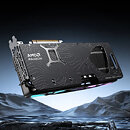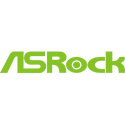GravaStar and Yeston Unveil the Mercury Nova RX 9070 XT Graphics Card
GravaStar, a global leader in cyberpunk-inspired tech gear, today announced the official launch of its highly anticipated Mercury Nova RX 9070 XT graphics card, created in collaboration with renowned hardware brand Yeston. The card is now available worldwide starting July 17, 2025, at 8:00 AM EST.
Combining the latest AMD RDNA 4 architecture with GravaStar's iconic sci-fi design language, the Mercury Nova RX 9070 XT delivers extreme gaming performance in an unmistakable chassis. Designed for gamers, custom PC builders, and collectors who demand both power and personality, this GPU is a bold new entry in the high-performance graphics card category.
Combining the latest AMD RDNA 4 architecture with GravaStar's iconic sci-fi design language, the Mercury Nova RX 9070 XT delivers extreme gaming performance in an unmistakable chassis. Designed for gamers, custom PC builders, and collectors who demand both power and personality, this GPU is a bold new entry in the high-performance graphics card category.







































































































